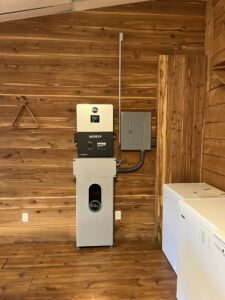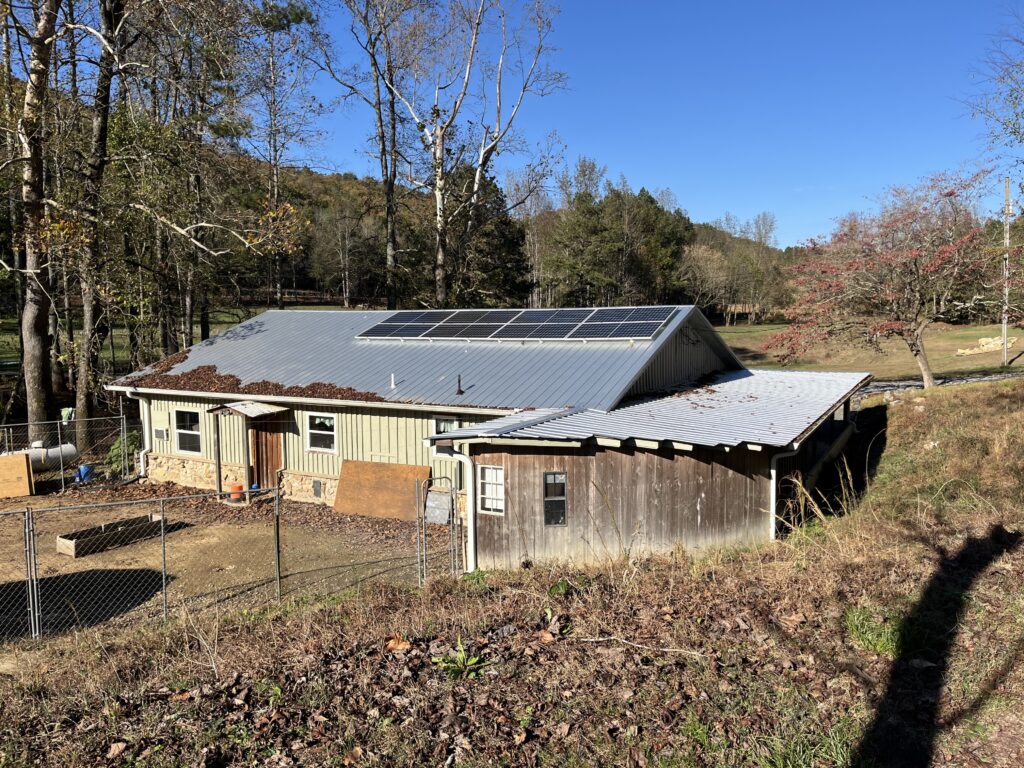With our primary residence mostly self-sufficient, Bob pivoted to ensuring the Cedar house was protected in the event of power loss, particularly as we had a refrigerator and two check freezers inside.
Quite a few new products came to market since we began our build, so there were more options from which to choose, and all were generally less expensive than things were in 2023, particularly solar panels.
Our aim was to provide emergency backup and generate most of our daily usage for the Cedar House for less than $5,000. We came close. Rather than an expensive ground-mounted solar array like we built for our primary residence (12kw from 32 panels), we mounted just 8 450-watt panels on the roof of the Cedar House. On a perfect day, this would provide roughly 25 kWH – a good starting point, we thought.

Inside the house, we installed the inverter, 15 KWH of batteries and a sub-panel in the game room with the pool table and chest freezers. This wasn’t an ideal location aesthetically, but it was directly adjacent to the main breaker panel, so made the installation easier. The inverter is a 6 KW “high frequency” design that easily handles the entire electrical loads except for the hot water heater and electric dryer, which are directly grid tied. A larger inverter to handle the entire house would have doubled the cost. Since we plan to use the Cedar House for weekend Airbnb rental and occasional family visits, we couldn’t justify the higher cost of a larger system.
What we discovered immediately was, even though the roof was South-facing, mature hardwood trees create some shading of the panels during the winter months throughout the morning hours, significantly reducing solar output. Throughout December, for example, we have not been able to fully re-charge the batteries during the day. Three seasons of the year, we should be self-sufficient.
In the Spring, we plan to mount another 4 panels on the roof and split the panels into two 6 panel strings to add capacity and reduce the shading impact. Hopefully, that will conclude our solar capital investments for the foreseeable future.
